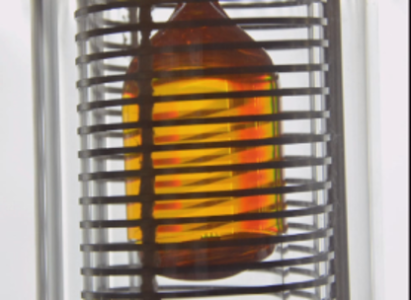Development of an order of magnitude better bromide broadband IR polarizer and acousto-optic tunable filter

The main objective of this activity was to develop the technology of crystal growth and testing of mercurous bromide (Hg2Br2) single crystals potentially suitable for broadband infrared (SWIR, LWIR) polarization optic and acousto-optics, incl. the acousto-optic tuneable filter (AOTF). The crystal exhibits unique optical characteristics in the full 0.5 - 30 μm spectral range: broad optical transmission, high birefringence, extremely low velocity of acoustic wave propagation and high coefficient of acousto-optical interaction. It is a very promising and completely new material for new type of hi-powerful polarizers and acousto-optical tuneable filters (AOTF) working in a far thermal infrared region. A present optical market offers only wire-grid or holographic type IR polarizers with very low or limited extinction ratios (ER) and very low optical load resistance, which limits the final performance and efficiency of the product.
Calcite-based polarization optics is applicable in a range of 0.3 - 2.5 μm at best and AOTFs based on paratellurite about 0.33 - 5 μm. The optical elements based on mercurous bromide are very promising components of future hi-tech IR optical systems in Earth and Space applications. Mercurous halides are the only group of crystals, which was originally developed in the Czech Republic by the Czech company BBT-Materials Processing, Ltd. (hereinafter "BBT"). BBT is still the only one worldwide to be able to produce and supply other world-unique crystal (mercurous chloride) in a sufficient quality and therefore has all the prerequisites to successfully address the development of technologies related to the growth and testing of mercurous bromide single crystals.
The objectives of this activities were:
- Implementation of mercurous bromide crystal growth technology into the standard production process.
- Tests & Analysis of the crystals.
- Optimization of manufacture process based on obtained results.
The main innovative contribution lies in the fact that the newly developed polarization and acousto-optic elements will allow a significant broadening of the spectral range of applications into the far-infrared region, including, among others, the characteristic absorption spectra of many organic molecules (fingerprints). In addition, one can expect up to an order of magnitude higher ER (extinction ratio, polarisation contrast) values and high resistance to high-energy laser beams.
